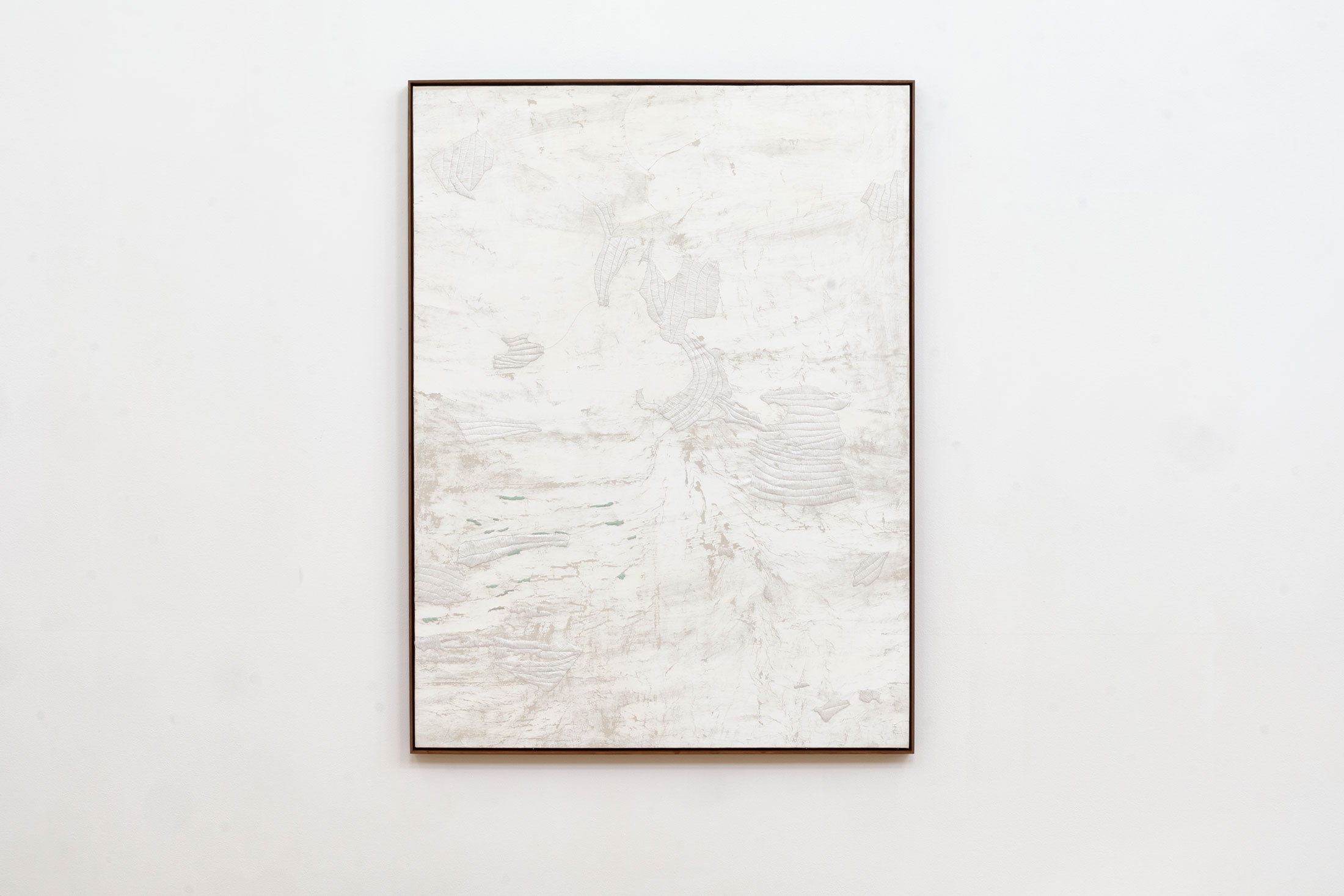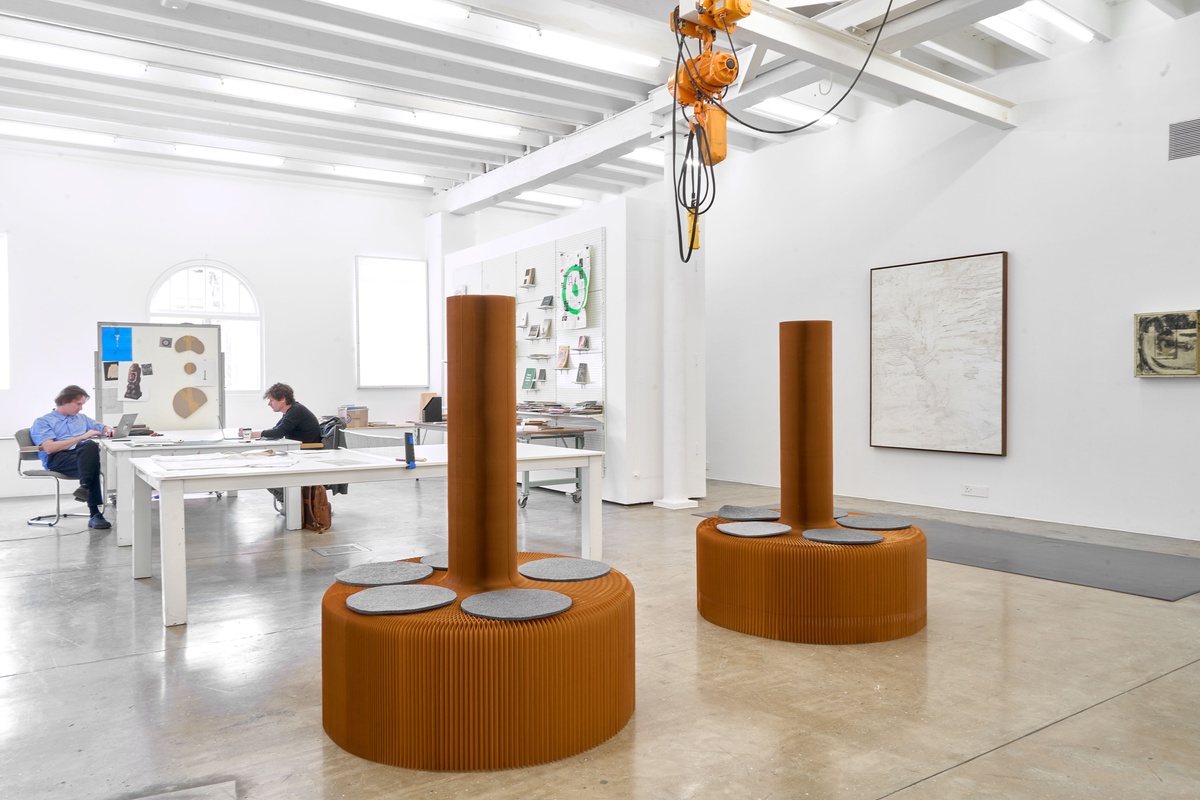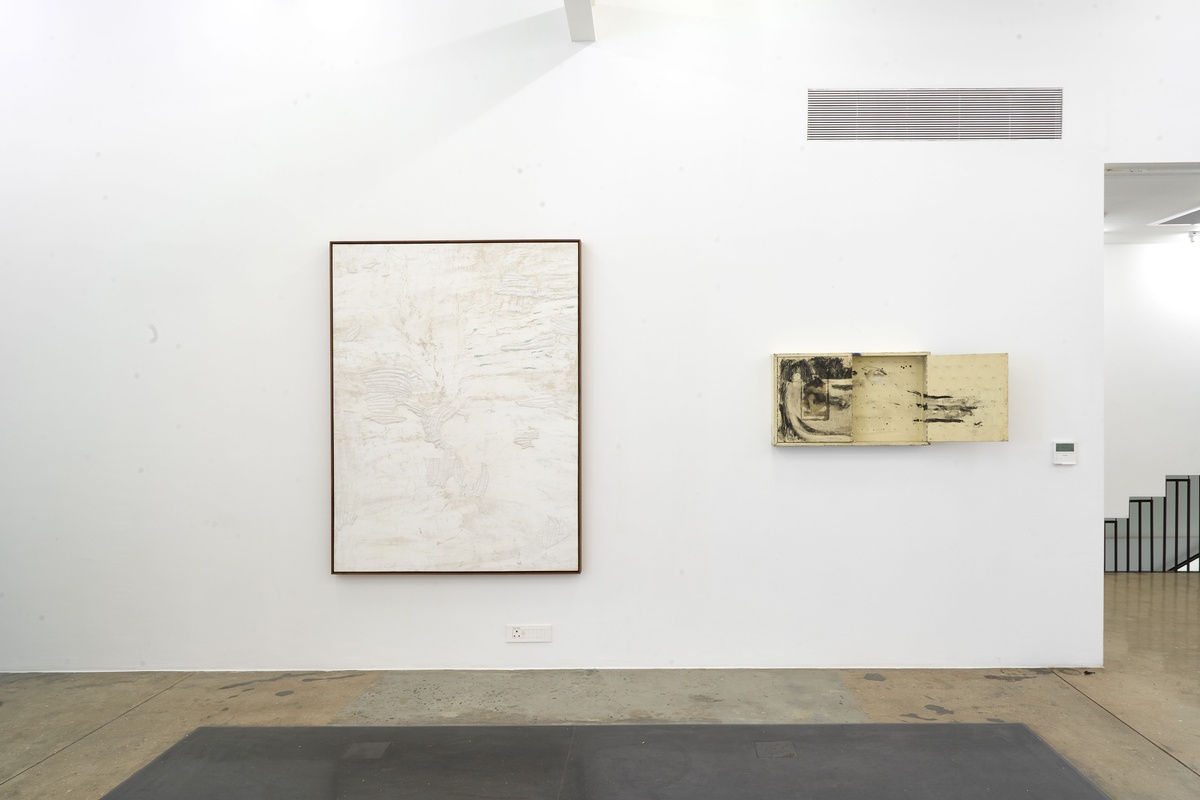Asemahle Ntlonti

Iqadi is shaped by opposing impulses: to wound and to repair, the artist restaging the slow degradation of time transcribed on the patinaed walls of an ancestral ruin. “This dialectic between trauma and healing,” as Sean O’Toole writes, “is a defining leitmotif of Ntlonti’s paintings. The idea of salvage…is deeply coded into Ntlonti’s work.” The work of the artist is the work of shifting ground, strong winds, bleaching sunlight, spreading damp – in a word: weather. Against what Ntlonti calls her “shy colour” grounds, cracks appear as filigreed veins, stains accumulate, whole flakes of pigment are lifted, the substrate scratched and worn. Iqadi stands as a contranym – the same word, as poet Terrace Hayes writes, “looking in opposite directions.” Like weather and weather, to decay or to endure, the artist disrupts the surface of her canvas that the past might persist in image and memory. Mending even as she abrades, Ntlonti’s embroiders into the fabric, at once concealing and delineating its lesions. Moments of pastel blue thread in the otherwise bone-white composition recall rivulets of running water on a faded earthen wall.
b.1993, Cape Town
Asemahle Ntlonti revolves the canvas one way and then another, applying, glueing, stripping, and scrubbing at both the back and front planes. The method the artist has devised etches a feeling of ‘round’ within her paintings, where paper is no longer flat; where what will become the face begins from behind. Working on the floor rather than against the wall, and across multiple works at any one time, Ntlonti interprets the colours and environments of her ancestral home in the Eastern Cape, “researching to understand myself, having conversations with my people because my history is not vastly written about.” The works are at once landscapes of place as well as portraits of interior spaces with their attendant intimacies.


